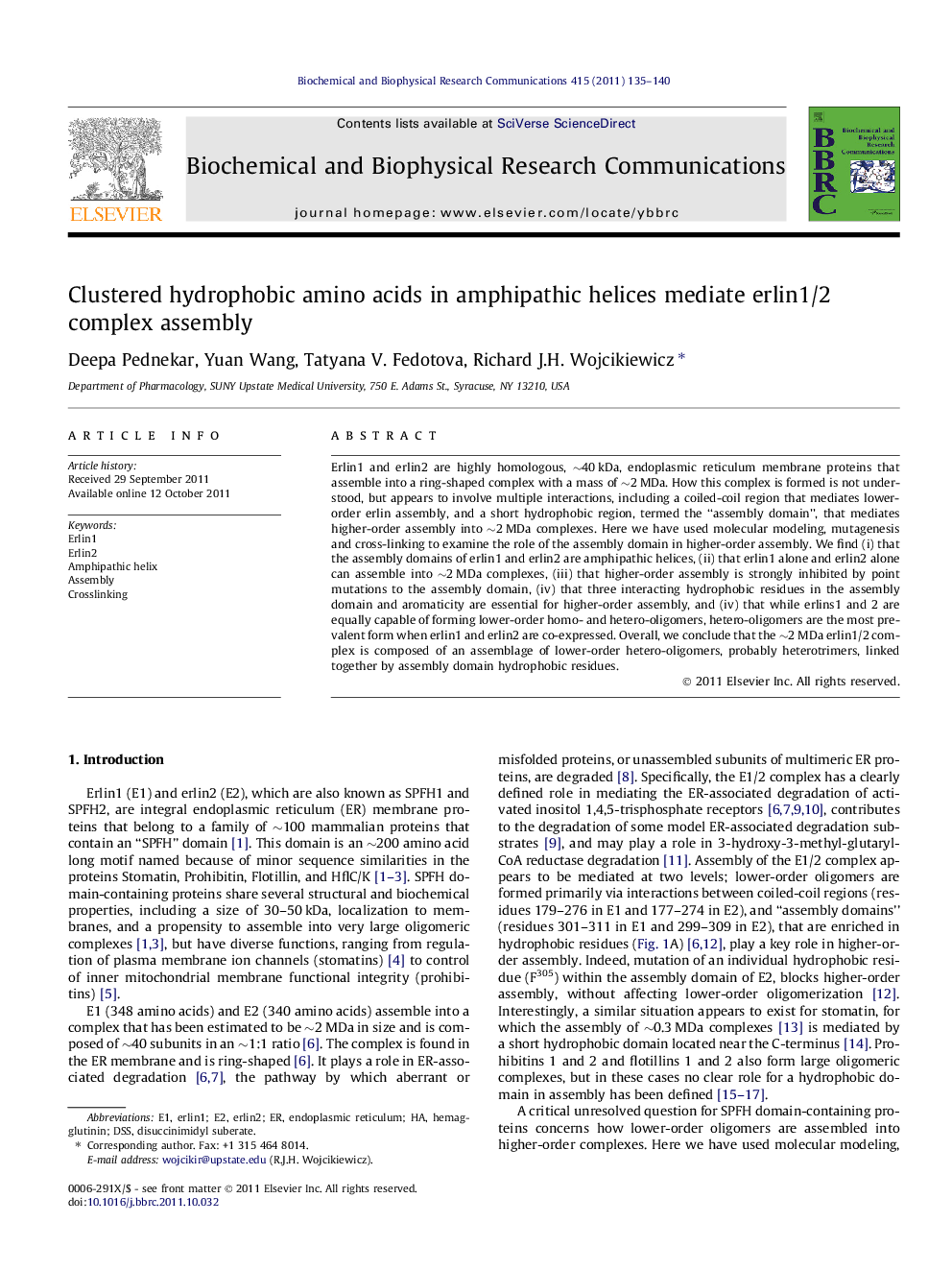| Article ID | Journal | Published Year | Pages | File Type |
|---|---|---|---|---|
| 1930351 | Biochemical and Biophysical Research Communications | 2011 | 6 Pages |
Erlin1 and erlin2 are highly homologous, ∼40 kDa, endoplasmic reticulum membrane proteins that assemble into a ring-shaped complex with a mass of ∼2 MDa. How this complex is formed is not understood, but appears to involve multiple interactions, including a coiled-coil region that mediates lower-order erlin assembly, and a short hydrophobic region, termed the “assembly domain”, that mediates higher-order assembly into ∼2 MDa complexes. Here we have used molecular modeling, mutagenesis and cross-linking to examine the role of the assembly domain in higher-order assembly. We find (i) that the assembly domains of erlin1 and erlin2 are amphipathic helices, (ii) that erlin1 alone and erlin2 alone can assemble into ∼2 MDa complexes, (iii) that higher-order assembly is strongly inhibited by point mutations to the assembly domain, (iv) that three interacting hydrophobic residues in the assembly domain and aromaticity are essential for higher-order assembly, and (iv) that while erlins1 and 2 are equally capable of forming lower-order homo- and hetero-oligomers, hetero-oligomers are the most prevalent form when erlin1 and erlin2 are co-expressed. Overall, we conclude that the ∼2 MDa erlin1/2 complex is composed of an assemblage of lower-order hetero-oligomers, probably heterotrimers, linked together by assembly domain hydrophobic residues.
► Erlins 1 and 2 are ER membrane proteins that form a large complex via unknown means. ► We find that there are multiple determinants of complex assembly. ► We focus on mutation of a key amphipathic helical domain that mediates assembly. ► This provides the first clear insight into how the erlin1/2 complex is assembled.
